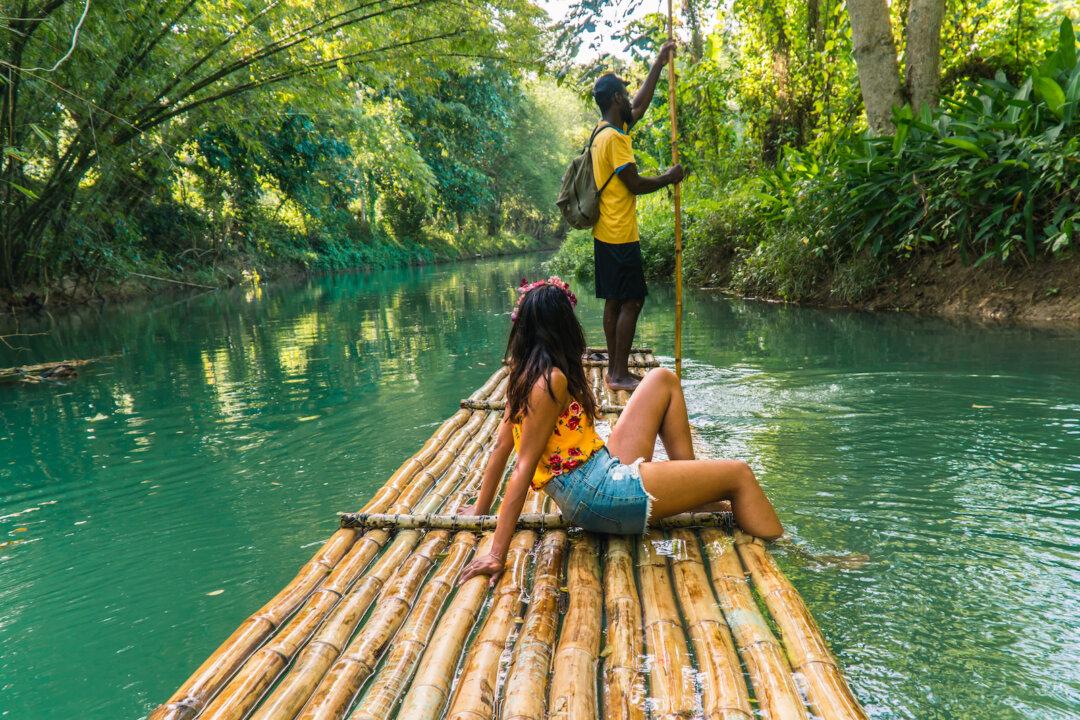I think of it as Huck Finn meets the Caribbean. Few other activities are as soothing as floating down a lazy river, and the lush landscape of Jamaica provides the ideal setting for a day trip on a raft. Various rivers curl down from the island’s mountains to the sea, passing through rich foliage burgeoning with exotic flowers and fruit trees.
This is not the adrenaline rush of whitewater rafting; these rivers are gentle and, in some places, quite shallow. Guides navigate rafts with long bamboo poles and provide the passenger with a colorful narrative for a colorful journey. It amounts to a mini-course in Jamaican flora and fauna with smatterings of history and what life is like far from the all-inclusive resorts along the coast. It is also one of the island’s most popular excursions.





